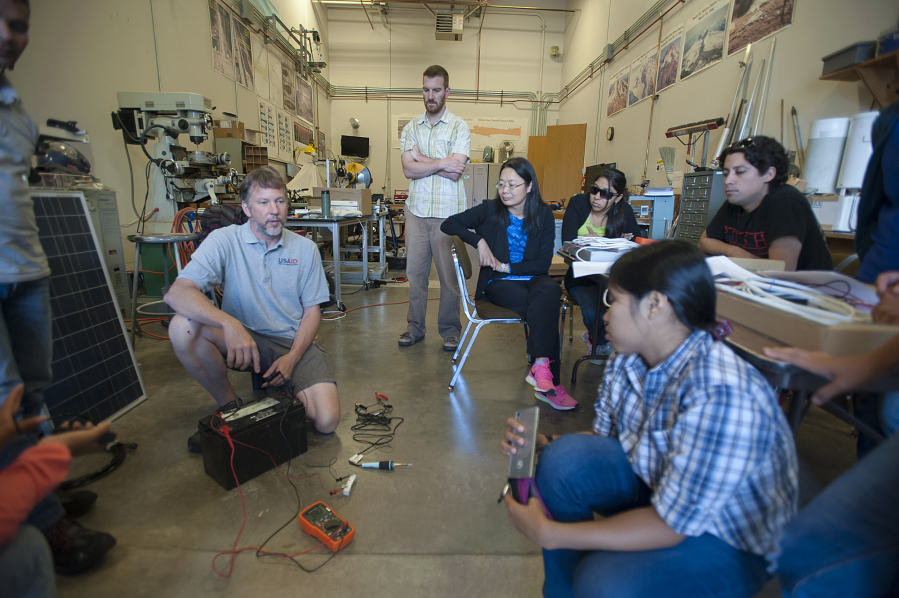A dozen scientists from around the world are in Vancouver to learn about monitoring hazardous volcanoes.
On Wednesday, that actually meant learning about batteries and solar panels. After all, you can’t learn anything if your monitoring station doesn’t have power.
These are life-and-death topics for people visiting the Cascades Volcano Observatory for two weeks. Their stay at the U.S. Geological Survey facility in Vancouver is part of an eight-week international training course for scientists who work at volcano observatories along the Pacific Rim.
This class includes Micah Sayco and Deborah Fernandez, who work for the Philippine Institute of Volcanology and Seismology.
“The Philippines has 300 volcanoes,” Sayco said. “Twenty-four are active, and we are monitoring eight.
“People in our country live near the volcanoes,” she said. If data is lacking as a disaster develops, “it’s on us.”
Sayco is a research specialist; Fernandez works in the field and has monitored steam-and-ash action at two different peaks in the last three months.
Other scientists are from Nicaragua, Peru, Indonesia, China, South Korea, Chile and Costa Rica. In those countries, “hundreds of thousands of people live at the base of volcanoes,” said Darcy Bevens, education specialist at the Center for the Study of Active Volcanoes.
“These are people with grave social responsibilities,” said instructor Andy Lockhart, a USGS geophysicist. As a result, these students “are really motivated.”
The Center for the Study of Active Volcanoes, which offers the course, is based at the University of Hawaii at Hilo.
Hawaii has a lot of active volcanoes that are accessible and can be studied without major risk; but the ones featured in the training are ground-hugging shield volcanoes. Organizers added Vancouver to the course in 2013 so the scientists could do hands-on work at Mount St. Helens.
“The Hawaiian volcanoes are very different from ours,” Sayco said. “Mount St. Helens is close to ours.”
Benefits of the eight-week course go beyond an introduction to American scientific technology and techniques. The scientists also are meeting each other. That’s important because natural disasters often ignore international boundaries that separate scientists.
“Here, they get to know each other,” said Lockhart. “There is a lot of networking.”




